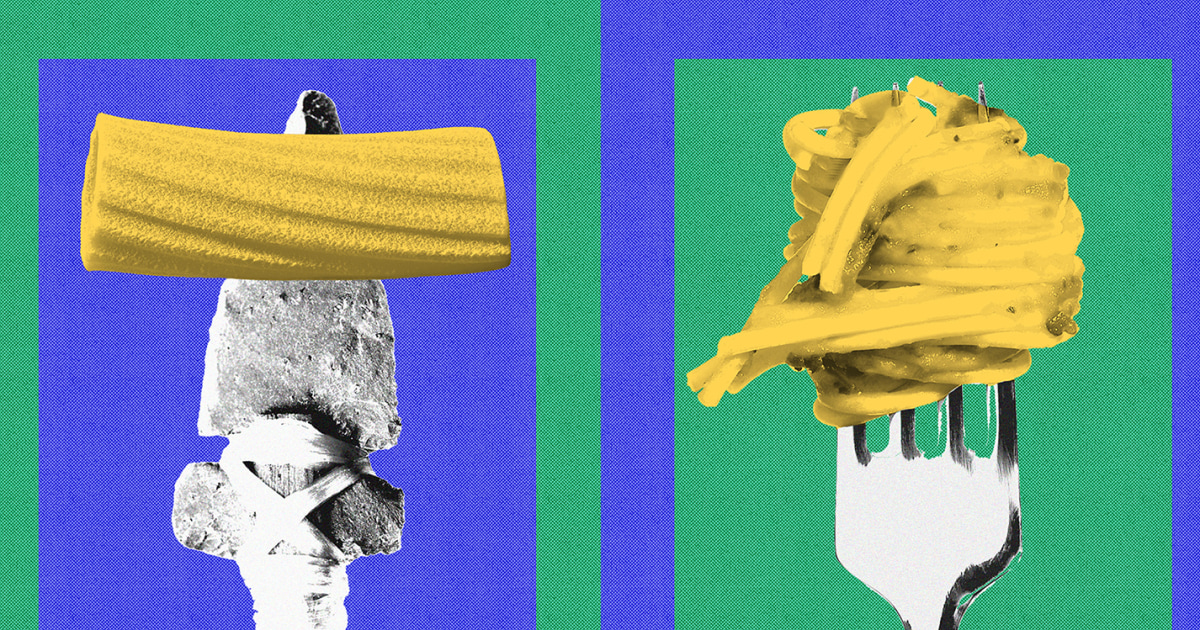The Summary
- New research offers insight into the evolutionary history of amylase genes, which are key to our ability to eat and digest starchy food.
- A study found that human ancestors started carrying multiple copies of the gene at least 800,000 years ago.
- Other recent research has suggested that the arrival of agriculture in Europe led people to acquire more amylase gene copies and adapt to starch-rich diets.
Long before humans ate dinner rolls or french fries, our ancient ancestors carried genes that would later help us digest those starchy foods.
Amylase genes produce an enzyme in saliva and the gut that’s key to breaking down starches into sugar. It’s the reason why, if you savor pasta long enough, it starts to taste sweet. Digesting starch — a type of carbohydrate — is a crucial part of how we derive energy from food.
New research published Thursday in the journal Science suggests the amylase gene has a much longer evolutionary history than scientists previously thought.
The study found evidence that as far back as 800,000 years ago, our human ancestors began to to carry multiple copies of the gene.
“That is predating not only agriculture, but also people’s migrations out of Africa,” said Omer Gokcumen, the study’s co-author and a professor of biological sciences at the University at Buffalo.
The study also found evidence of multiple amylase copies in Neanderthals and Denisovans, ancestral cousins of modern humans. Previously, the gene was only confirmed to have started duplicating with the advent of farming around 12,000 years ago.
It’s not clear what purpose the amylase gene served at the time those ancient ancestors lived, Gokcumen said, though it’s possible that Neanderthals had starch in their largely carnivorous diets.
Today, he added, amylase could partly explain why starchy foods taste good to us. Some studies have suggested that populations with higher numbers of amylase copies tend to eat more starch, though more research is needed to explore those theories.
Peter Sudmant, an assistant professor of integrative biology at the University of California, Berkeley, who was not involved in the new study, published his own research on the amylase gene last month.
That study, in the journal Nature, suggested that humans acquired more copies of amylase genes with the arrival of agriculture in Europe 12,000 years ago, and as a result became better adapted to starch-rich diets.
“When people started eating a whole lot more starches, presumably there was a survival fitness for people who had more amylase genes,” Sudmant said.
As for the role of amylase genes today, scientists are still teasing out whether having a high number of the genes is useful to people or comes with a risk of negative health consequences. (Sudmant noted that studies have linked the presence of more amylase copies to cavities, since the enzyme converts starchy foods to sugar.)
Before agriculture developed, he said, it’s possible the gene existed for no reason at all.
“It could have just been floating around and not serving a purpose,” he said. “Not everything in our genome has a purpose. … There are things that just exist.”
Both recent studies relied on a relatively new technology to analyze genetic material from ancient humans. Called long-read sequencing, the tool allows scientists to read entire genomes, including regions that were previously hard to observe in great detail. In this case, it gave them an unprecedented look at the region that contains amylase genes.
Gokcumen’s study analyzed genetic material from 68 ancient humans, including a sample of 45,000-year-old remains from Siberia and a 34,000-year-old sample from Romania. Sudmant’s study, meanwhile, looked at hundreds of ancient genomes.
“We could fully, comprehensively look at dozens of individuals from diverse ancestral backgrounds,” Gokcumen said. “And once we do that, then we can basically start to reconstruct the evolutionary history.”

Leave a Reply